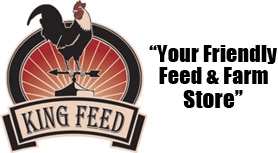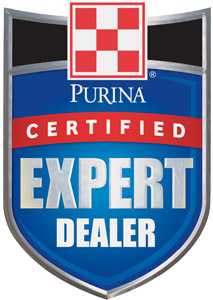{article.name}
How to Use Complete Feeds to Stretch Your Hay Supply

- Share this:
- Share on Facebook
- Pin on Pinterest
- Tweet on Twitter
Fiery blazes, drought, and poor growing conditions have made hay difficult to find and expensive to buy in many locations throughout the nation. These conditions have left horse owners with the difficult task of finding an affordable source of quality hay for their horses. Poor quality hay and inconsistent sources can increase the chance for digestive upset and can leave otherwise healthy animals sidelined. Fortunately, baled hay is not the only forage option available to owners. Purina Mills, LLC offers a full line of complete feeds which can be used to stretch hay supplies or completely replace the hay portion of the horse’s diet. Purina’s complete feeds include Horse Chow 100 and 200, Equine Junior, Equine Adult, Equine Senior, and Complete Advantage. These products contain roughage that will meet the horse’s fiber requirement while also providing a consistent source of forage and balanced nutrition to the horse.
While baled hay is generally the foundation of equine diets, there are several advantages to the use of complete feeds to replace all or some of the hay portion of the horse’s diet. Baled hay can vary in content and nutritional makeup, and it can be prone to vitamin breakdown. Conversely, the complete feeds offer a reliable source of nutrition. Each bag carries a guaranteed analysis, which means that each bite is nutritionally balanced and consistent. The nutritional consistency of complete feeds means fewer dietary changes, lessening the chance for digestive upset. This is especially true for horses in competition where the use of a complete feed diet could lead to a more dependable diet while traveling on the road.
Baled hay also tends to be more cumbersome to move and store than complete feeds. Complete feeds stack neatly in the feed room without leaving behind loose hay and dust to clean up afterwards. Neater feeds reduce dust and other airborne irritants, giving allergy relief to horses and humans alike. This can also aid horses that suffer from chronic respiratory problems such as recurrent airway obstruction or heaves.
Still, one of the most enduring benefits for horse owners to use complete feeds is their availability. Horse owners have a guaranteed supply of complete feeds through their Purina dealers. Using complete feeds eliminates the endless search for quality hay and the inevitable haggling over the cost. It also eliminates the anxiety owners experience as they await their next load of “mystery hay” from a new supplier. Although, in some cases, owners may have to pay more to feed complete feeds versus conventional baled hay, there is no doubt that the advantages of consistency, quality, and ease of using complete feeds far outweigh their potentially slightly higher cost.
How should the Purina complete feeds be used? To use a complete feed as a hay stretcher, 50% of the hay should be replaced with an equal amount of the appropriate complete feed. If the horse is being fed grain, reduce the amount of grain by ½ to 1 pound. To replace the entire hay portion of the diet while feeding grain, feed the same amount of the complete feed as you were feeding of hay and reduce the amount of grain by 2 - 3 pounds. To use the complete feed as the entire ration, owners can simply follow the directions on back of the bag. Owners should evaluate their horses on an individual basis; minor adjustments can be made to these recommendations based on the body condition score of the horse. Changes in a horse’s diet should be made gradually and clean, fresh water should available at all times. Moreover, horses should be fed in multiple meals throughout the day. One of the minor drawbacks of complete feeds is that horses tend to eat them more quickly than hay. That could leave horses with their nutritional requirements met, but their pervasive need to chew unsatisfied. Multiple meals, access to pasture, exercise, and some long stem forage will help to alleviate any boredom.
Thus, the use of complete feeds as all or part of the horse’s diet can be advantageous to both the horse and the owner. Complete feeds are not only a consistent source of forage in the diet, but they are also easy to use. Thanks to complete feeds, horse owners are no longer limited to conventional baled hay, but instead have a number of options from which to choose.
Special Offers
We are constantly adding new specials to our site. Be sure to check back often!



Comments